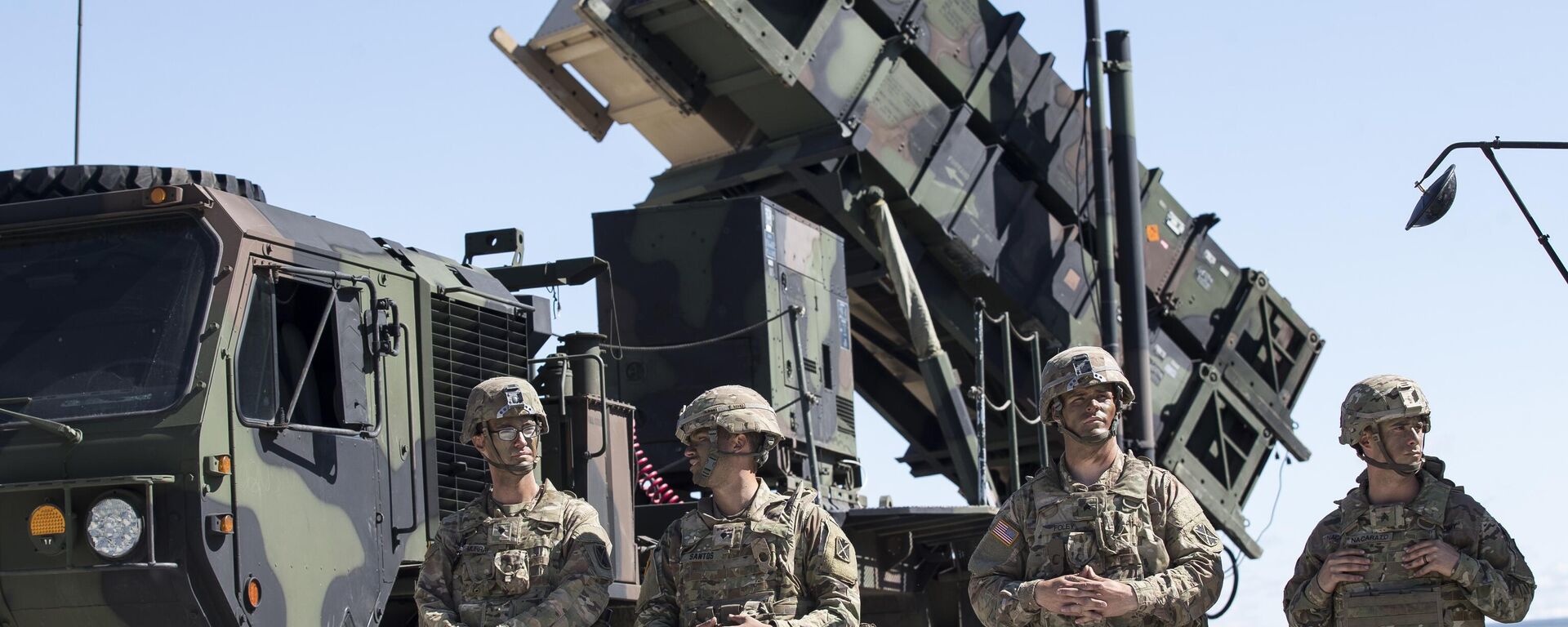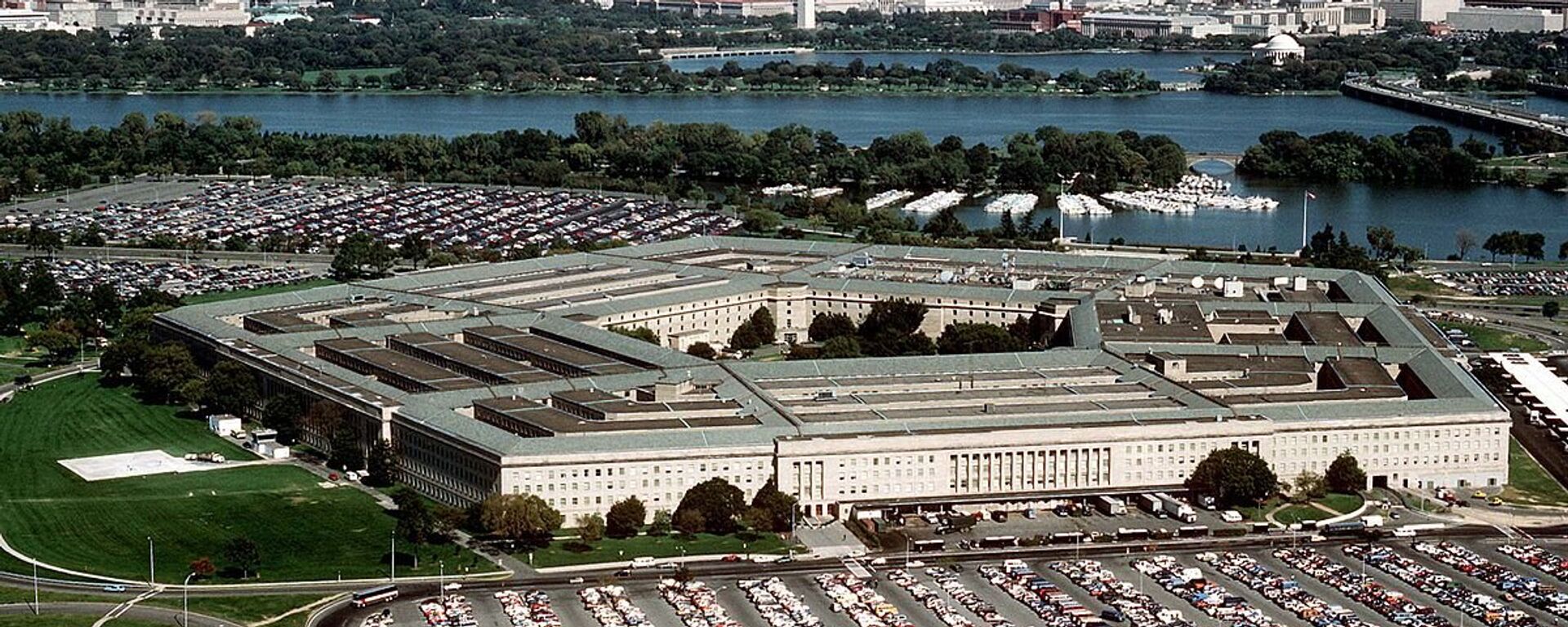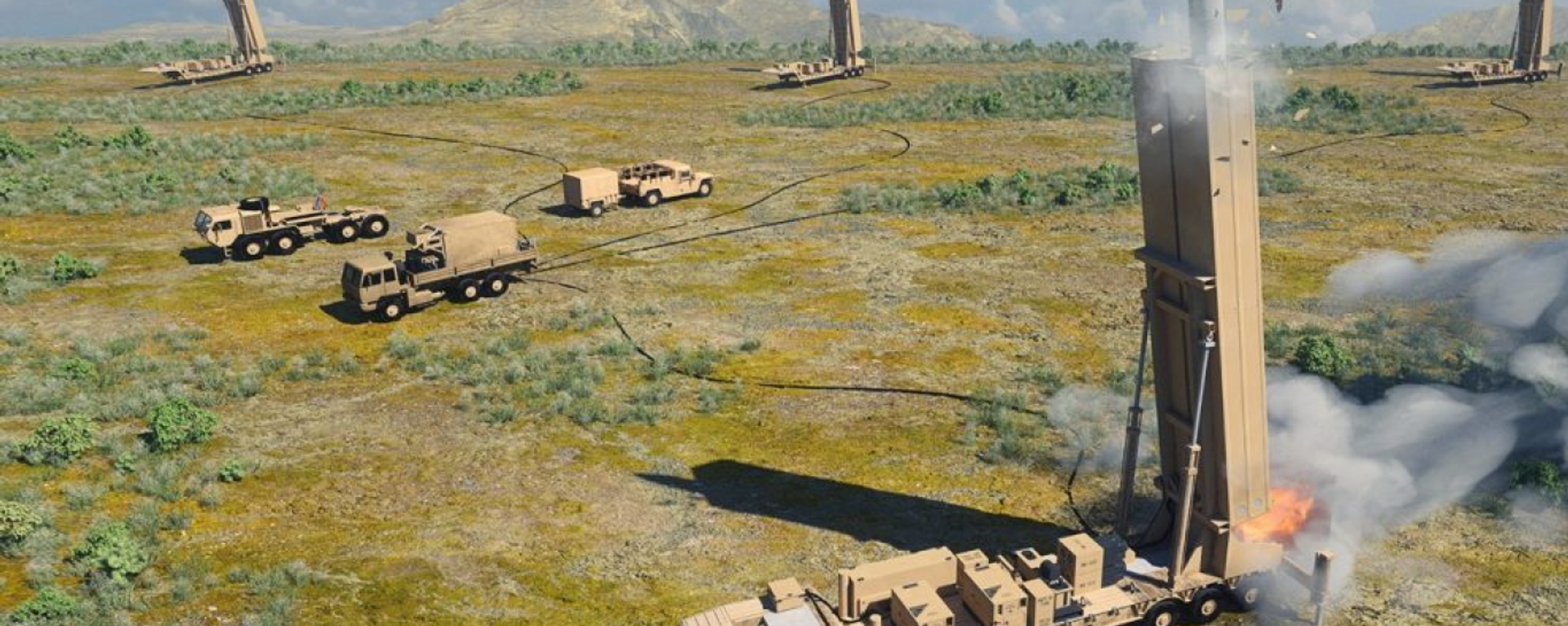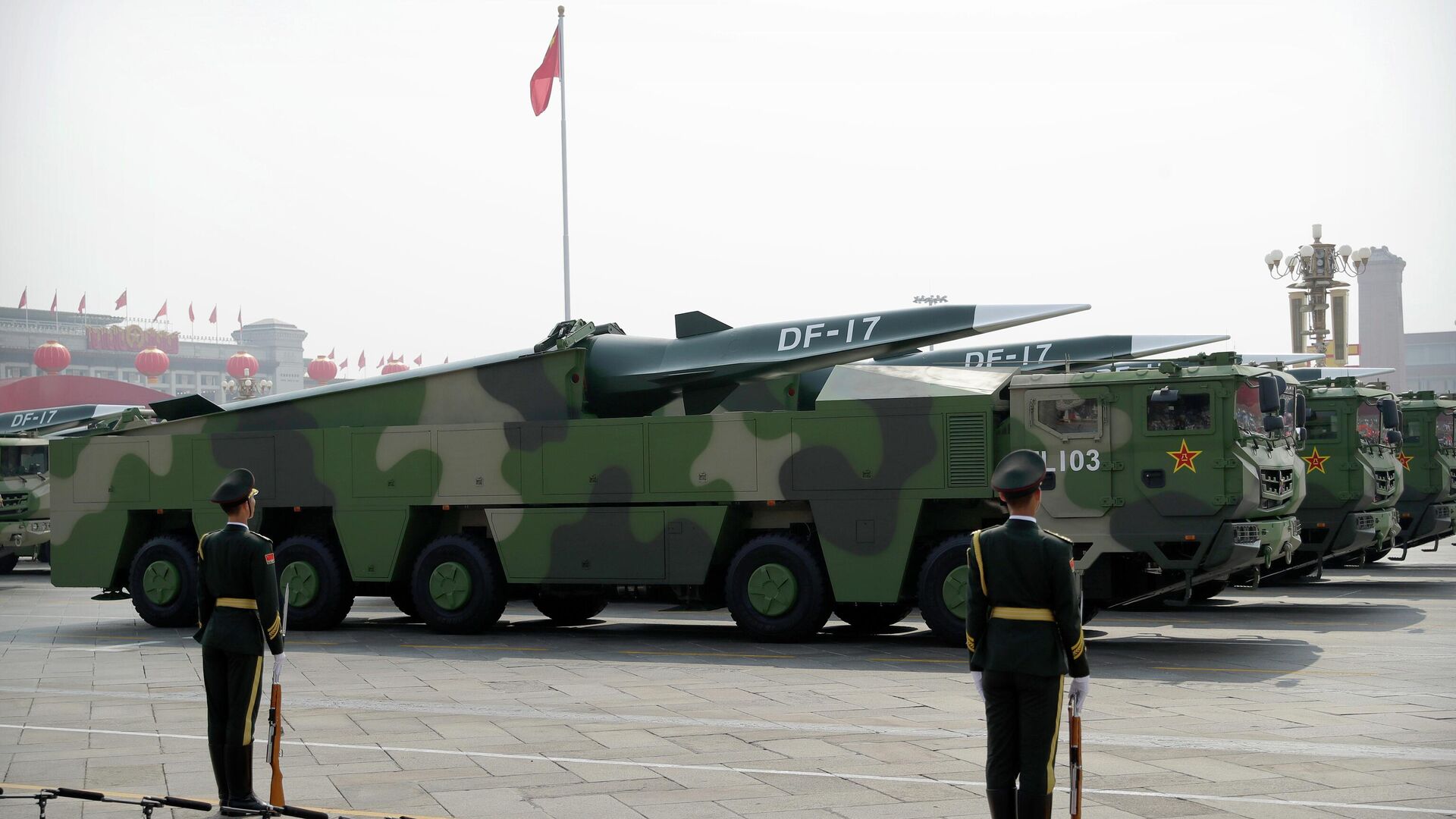https://sputnikglobe.com/20231120/china-reportedly-sets-up-near-space-command-for-hypersonic-weapons-forces-1115083213.html
China Reportedly Sets Up Near-Space Command for Hypersonic Weapons Forces
China Reportedly Sets Up Near-Space Command for Hypersonic Weapons Forces
Sputnik International
According to reports from Chinese media, the People’s Liberation Army (PLA) may have set up the first-ever military command for hypersonic weapons and other near-space military operations.
2023-11-20T20:50+0000
2023-11-20T20:50+0000
2023-11-20T20:49+0000
military
china
pla
hypersonic missiles
hypersonic weapons
space command
https://cdn1.img.sputnikglobe.com/img/07e6/08/05/1098146551_0:98:3072:1826_1920x0_80_0_0_62659629990f4cc256cb4d9c290eda06.jpg
The report was carried in Chinese media on Monday and based on a paper submitted to the 11th China Command and Control Conference in October by researchers from the National University of Defense Technology in Changsha. It refers to the PLA’s Near-Space Command as a fifth command, joining the Army, Navy, Air Force, and Rocket Force.“The near-space combat force is in the process of rapid development. The establishment of relevant units is not yet mature, and combat operations have not been standardized. The understanding of near-space combat command needs to be deepened,” the researchers wrote.The researchers said it was necessary for the PLA to be prepared to fight in near-space, which had become a hotly contested zone and could “determine the outcome of future battles.”Ironically, when the United States set up its Space Force (USSF) in 2019, the Pentagon cited purported threats posed to US space supremacy by Chinese and Russian technology, which includes anti-satellite (ASAT) missiles and supposed “stalker” satellites, among other weapons. China tested an ASAT missile in 2007 that successfully destroyed a malfunctioning Chinese satellite using a kinetic kill vehicle.“The highest military command can approve the scale of use, activity areas and method of use to avoid causing political and diplomatic nuisance,” the paper said.Hypersonic weapons are one of the few to operate in near-space, which extends from 12 miles (63,000 feet) altitude up to the boundary of space at 62 miles altitude. There, the air is too thin for heavier-than-air aircraft to fly but too thick for satellites to operate. However, it is ideal for hypersonic weapons, which use a rocket boost to achieve speeds above Mach 5 before detaching an unpowered glide vehicle that can maneuver to confuse and avoid enemy air defense systems.The researchers said this new capability “could change the pace of battles and bring a major impact to how a war would end,” noting that in a future war, hypersonic weapons could be used to devastating effectiveness to paralyze an enemy’s communications and transportation networks early in the conflict - including their ability to take offensive action in space and near-space.They also note that command and control hubs would be primary targets, as they always are in war.At present, only China and Russia have hypersonic weapons in full military service. Iran, the Democratic People’s Republic of Korea (DPRK) and the United States have tested hypersonic weapons, but not yet announced their deployment with front-line forces. Several other nations have announced programs to develop hypersonic weapons.
https://sputnikglobe.com/20231113/us-reportedly-running-low-on-air-defense-systems-amid-heightened-mid-east-tensions-1114935259.html
https://sputnikglobe.com/20221027/pentagon-publishes-new-national-defense-strategy-aimed-at-integrated-deterrence-of-china-russia-1102778571.html
https://sputnikglobe.com/20230915/us-army-admits-hypersonic-weapon-deployment-plan-behind-schedule-1113406957.html
china
Sputnik International
feedback@sputniknews.com
+74956456601
MIA „Rossiya Segodnya“
2023
News
en_EN
Sputnik International
feedback@sputniknews.com
+74956456601
MIA „Rossiya Segodnya“
Sputnik International
feedback@sputniknews.com
+74956456601
MIA „Rossiya Segodnya“
hypersonic weapons, does china have hypersonic missiles, what can shoot down a hypersonic missile
hypersonic weapons, does china have hypersonic missiles, what can shoot down a hypersonic missile
China Reportedly Sets Up Near-Space Command for Hypersonic Weapons Forces
According to reports from Chinese media, the People’s Liberation Army (PLA) may have set up the first-ever military command for hypersonic weapons and other near-space military operations.
The report was carried in Chinese media on Monday and based on a paper submitted to the 11th China Command and Control Conference in October by researchers from the National University of Defense Technology in Changsha.
It refers to the PLA’s Near-Space Command as a fifth command, joining the Army, Navy, Air Force, and Rocket Force.
“The near-space combat force is in the process of rapid development. The establishment of relevant units is not yet mature, and combat operations have not been standardized. The understanding of near-space combat command needs to be deepened,” the researchers wrote.
“It is necessary to adjust the hierarchy of command and control powers, selection of command methods, implementation of executive orders and support for command communication,” officials said.
The researchers said it was necessary for the PLA to be prepared to fight in near-space, which had become a hotly contested zone and could “determine the outcome of future battles.”

13 November 2023, 23:36 GMT
Ironically, when the United States set up its Space Force (USSF) in 2019, the Pentagon cited purported
threats posed to US space supremacy by Chinese and Russian technology, which includes anti-satellite (ASAT) missiles and supposed “stalker” satellites,
among other weapons. China tested an ASAT missile in 2007 that successfully destroyed a malfunctioning Chinese satellite using a kinetic kill vehicle.
“The near-space force operates in a special battlefield. Actions carried out in sensitive areas or over the territory of other countries may trigger political or diplomatic reactions,” they said, necessitating a higher level of command authority.
According to researchers, China realized that hypersonic weapons in particular could pose international political problems, as well as surveillance drones and other high-altitude equipment.
“The highest military command can approve the scale of use, activity areas and method of use to avoid causing political and diplomatic nuisance,” the paper said.
China became the first country in the world to put hypersonic weapons into regular military service in 2019, and has added several more similar weapons since, which can be fired from land-based silos or transporter-erector-launcher trucks, sea-based warships and submarines, and by H-6N bomber aircraft in mid-flight.

27 October 2022, 19:57 GMT
Hypersonic weapons are one of the few to operate in near-space, which extends from 12 miles (63,000 feet) altitude up to the boundary of space at 62 miles altitude. There, the air is too thin for heavier-than-air aircraft to fly but too thick for satellites to operate.
However, it is ideal for hypersonic weapons, which use a rocket boost to achieve speeds above Mach 5 before detaching an unpowered glide vehicle that can maneuver to confuse and avoid enemy air defense systems.
At present, almost no air defense system in operation is known to be able to take down a hypersonic weapon in flight, although some, such as Russia’s S-500 and the US’ SM-6, have been purported to be able to do so under certain circumstances.
The researchers said this new capability “could change the pace of battles and bring a major impact to how a war would end,” noting that in a future war, hypersonic weapons could be used to devastating effectiveness to paralyze an enemy’s communications and transportation networks early in the conflict - including their ability to take offensive action in space and near-space.

15 September 2023, 20:01 GMT
“Hypersonic weapons can attack rocket launch sites, [destroying] the enemy’s ability to fire anti-satellite missiles on our civilian satellite networks,” the researchers said. “These attacks must be precise, overwhelming and merciless.”
They also note that command and control hubs would be primary targets, as they always are in war.
At present, only China and Russia have
hypersonic weapons in full military service. Iran, the Democratic People’s Republic of Korea (DPRK) and the United States have
tested hypersonic weapons, but not yet announced their deployment with front-line forces. Several other nations have announced programs to develop hypersonic weapons.





